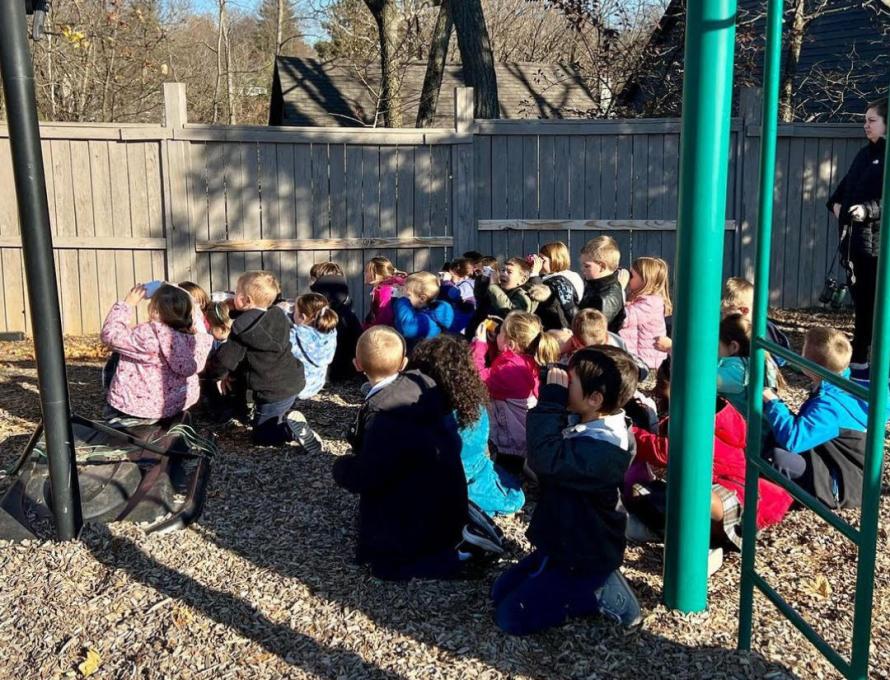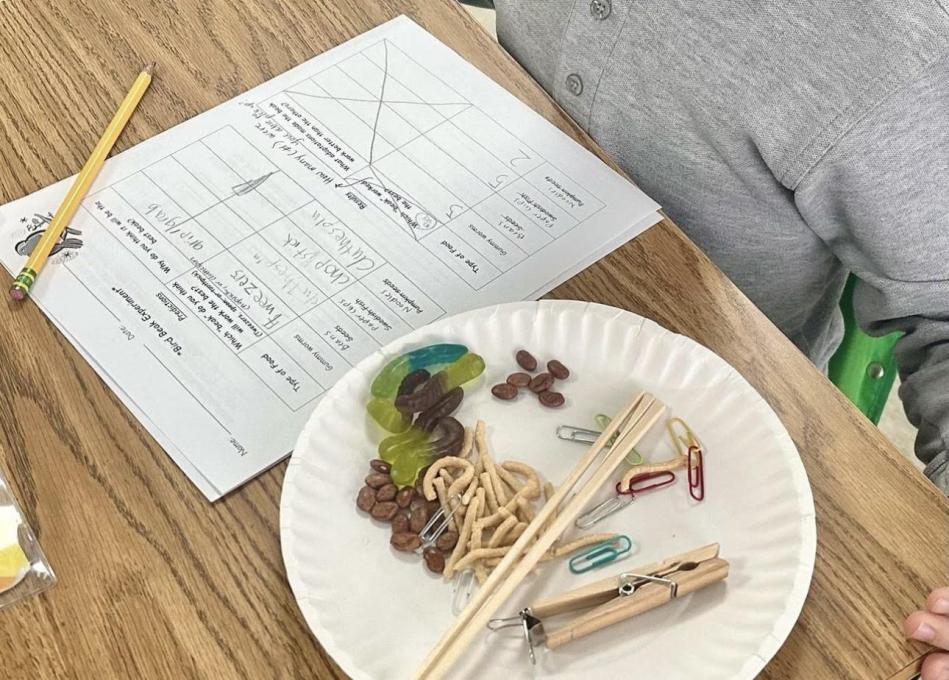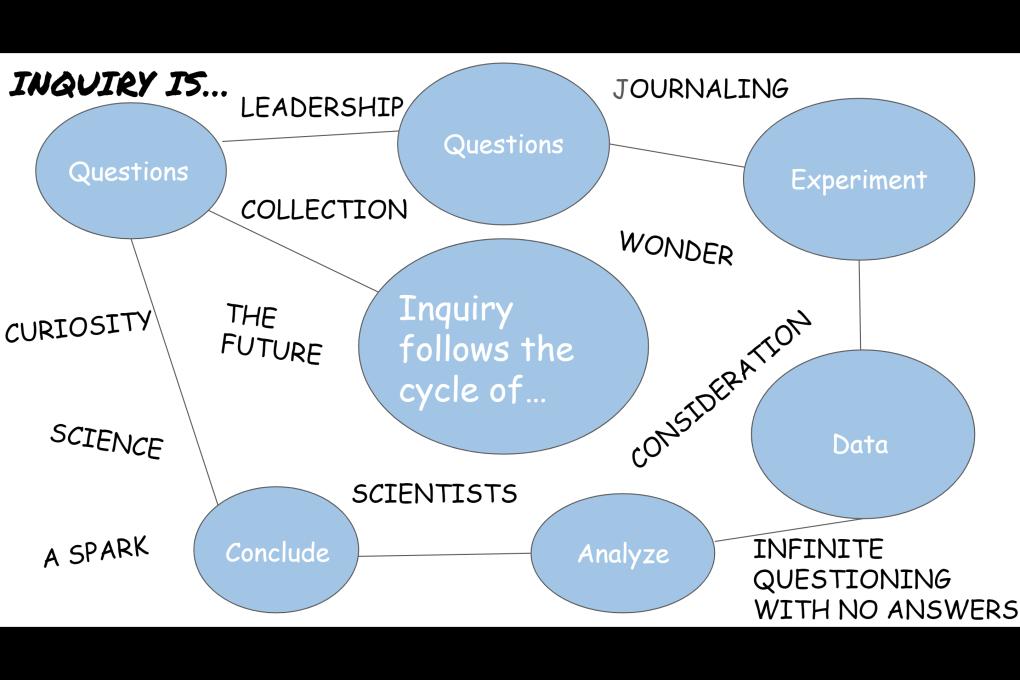Elise
Forum Replies Created
Viewing 13 posts - 1 through 13 (of 13 total)
-
EliseParticipantI enjoyed Leo Sack's "Exploring With Equipment" comments! As a teacher, sometimes I find myself hesistant to bring equipment like binoculars for my students to use while birding. Mainly because they grow fatigue with trying to use my cheap ones or they have not picked up the habitat of using it for our purpose outside. His comments reminded me that I think moving forward, I have to give my students time to explore with equipment and with their DIY binoculars. If I don't give them exploration time, they will never get in the habit of using them for their purpose.
 in reply to: Building Enthusiasm for Getting Outside #1011931
in reply to: Building Enthusiasm for Getting Outside #1011931 -
EliseParticipant
 My very first memories and connection with nature started when I was a child, my family and I took daily family trips to our local Metro Park in Columbus, Blendon Woods. Even when I visit the park today I am immediately transported back in time to walking the trails, visiting the nature center, or playing on the playground with my sister as a child. The smell and the crunch of the leaves floods me with nostalgia. It feels like a warm embrace being at that park. Even visiting the zoo every week as young child connected me to nature. I wondered and learned about the various animals and the consistent trips made me feel connected to the animals getting to see them often. These things encompass my favorite memories of outdoor childhood play. As a first grade teacher, I wish for my students to develop the same connection and embrace I feel from Blendon Woods and the zoo. No matter how I am feeling, visiting these places always lifts me up and reminds me that nature is always present for us. This started because of my visits there as a young child. I worry as a teacher that because of technology, my students may lose that connection early on with nature. I pray and hope I can connect them to nature so they grow to love it as much as me.
Me & Nature Below...:)
My very first memories and connection with nature started when I was a child, my family and I took daily family trips to our local Metro Park in Columbus, Blendon Woods. Even when I visit the park today I am immediately transported back in time to walking the trails, visiting the nature center, or playing on the playground with my sister as a child. The smell and the crunch of the leaves floods me with nostalgia. It feels like a warm embrace being at that park. Even visiting the zoo every week as young child connected me to nature. I wondered and learned about the various animals and the consistent trips made me feel connected to the animals getting to see them often. These things encompass my favorite memories of outdoor childhood play. As a first grade teacher, I wish for my students to develop the same connection and embrace I feel from Blendon Woods and the zoo. No matter how I am feeling, visiting these places always lifts me up and reminds me that nature is always present for us. This started because of my visits there as a young child. I worry as a teacher that because of technology, my students may lose that connection early on with nature. I pray and hope I can connect them to nature so they grow to love it as much as me.
Me & Nature Below...:)

 in reply to: Remembering Your Moments in Nature #1010830
in reply to: Remembering Your Moments in Nature #1010830 -
EliseParticipantPrior to providing students with inquiry-based projects in the classroom, I want to provide students with opportunity for review, discussion, whole group application, or in other words formative assessments. I feel like inquiry-based projects are summative assessments because even though their results may vary their assessment should be based on their application of their understanding and how they showed their application. Inquiry based assessments are not black and white and do not have right or wrong answers but rather show the generation of student ideas. Their reasoning and demonstration of their understanding is the assessment.in reply to: Sharing Student Projects #1001513
-
EliseParticipantI researched eBird. This tracking system, allows any birder to input their bird data from their birding experiences. Scientists can then use the data submitted from average birders to understand migration, bird types, sounds, etc. Thus eBird directly playing a role in citizen science. This database is accessible to anyone and someone who has not participated in the project can use the data. For example, let's say a student is researching tufted titmouses and they want to know where the are primarily located. On ebird, the "species map" allows any individual to type in a bird type and the map shows where the bird type is directly located. (As seen in the screenshot image.) A student could then take their research project even further, and use the species map to locate what cities or areas the tufted titmouse is located more heavily in versus not. They could graph their findings and conduct further research on their prevalence in more areas than others. The second image shows in specified areas of the city of Columbus where the tufted titmouse was reported using ebird.

 in reply to: Data Literacy Through Citizen Science #1001510
in reply to: Data Literacy Through Citizen Science #1001510 -
EliseParticipantTo encourage curiosity and questions in the classroom I: Make observations, analyze and discuss observations, create repeated opportunities to observe, make connections, and collect evidence/visuals. To inspire deeper observational and experimental questions, I create repeated opportunities for discussion to generate students' understanding but to also give them the opportunity to formulate ideas and form further questions following experiments or observations.in reply to: Launching Investigations #1001497
-
EliseParticipantI am a first grade teacher collaborating with another 1st grade class to participate in Project FeederWatch. The biggest challenge we face is seeing birds at our feeders consistently. Our school is located in a more urban area. Therefore, the amount of noise in our area I fear prevents the amount of birds we observe. This citizen science project has opened our students' eyes to the wildlife right outside their door. I often would hear discussion about zoo animals but now they discuss birds and their pleasure in documenting our observations of them outside. They begin to see how the living things and wildlife around them is impacted by themselves.in reply to: Symbiosis in the Soil – Classroom Case Study #1001495
-
EliseParticipantThe biggest way we can be catalysts for students to observe and wonder is through MODELING. In my opinion, when we model ourselves observing and wondering, our students will do the same. I think also asking questions and showing how answering questions leads to more questions also promotes observing and wondering in the classroom.in reply to: Supporting Open-ended Questions #1001490
-
EliseParticipant
 The most impactful thing for me when creating the sound map, was how much "man-made noise" I heard. For example, cars, bikes, planes, etc. I had hoped to hear more of not "man-made noise". It was cool to hear bird sounds as I hear them frequently where I live. When doing a sound map, I love closing my eyes to be fully immersed in the sound. I will encourage my students to do the same. in reply to: Encouraging Observations #1001486
The most impactful thing for me when creating the sound map, was how much "man-made noise" I heard. For example, cars, bikes, planes, etc. I had hoped to hear more of not "man-made noise". It was cool to hear bird sounds as I hear them frequently where I live. When doing a sound map, I love closing my eyes to be fully immersed in the sound. I will encourage my students to do the same. in reply to: Encouraging Observations #1001486 -
EliseParticipantTwo practices I feel will be most important in my teaching setting is, asking questions and concept maps. I often as a teacher find myself giving information but not allowing time for exploration based on students questions. I truly do want them to ask questions and feel they have the means to find the answer to their questions. I want to begin to have them ask questions and we work together to find an answer but also ask more questions following our investigation. Additionally, I want to further use concept maps in the classroom because I love it allows students to see the connection between things. I want them to make connections and the connections to stick with them.in reply to: Linking Citizen Science & Inquiry #1001329
-
EliseParticipantI wish to model UC Davis' teaching practice, "position youth as people who do science". What I love about project feederwatch and apps like Merlin and ebird, is ANYONE can feel like they are apart of science and scientists. My students are beyond engaged because they are directly playing a role with their observations they have seen. I want to create more opportunities like this for them, because I do not want them to think scientists are just older men in lab coats. When they think of a scientists, I want them to think of themselves.in reply to: Citizen Science in Your Classroom #1001327
-
EliseParticipantMy students and I are currently collaborating with another first grade class to participate in Project Feederwatch. I have it to be crucial to bring students together following our birding and discuss our bird findings. For example, where we found the bird, what bird, what sound did it make, how many etc. The students and I then log our findings into our nature journals. If I log our bird findings into Merlin or ebird, I also show them the ebird map and how we and others around the world are playing a role in science and the understandings of birds. This REALLY peeks student interest. I feel our logging and discussion, helps them see the purpose of what we are doing.
 in reply to: Intro to Citizen Science #1001320
in reply to: Intro to Citizen Science #1001320 -
EliseParticipantEvery spring, I conduct a living thing units to adhere to our first grade science standards, "living things have basic needs, which are met by obtaining materials from the physical environment" and, "living things survive only in environments that meet their needs". A lesson I give students to help them generate an understanding of living things and how they retrieve their basic needs is with the animal adaptation of bird beaks. I explain to students what an animal adaptation is, and how a bird beak for example is adapated to birds accordingly to help them retrieve food in the specific environment they live in. Then I have students conduct an investigation where they are given different materials ("beaks") that they must use to retrieve different foods. The materials ("beaks") they are given are: (1 singular) Tweezers, paper clips, chopsticks, and clothespins. Following the materials ("beaks"), they are given: Gummy worms, beans, and noodles. Using their "beaks" they must see which beak is able to retrieve what food the best. Following the investigation, the students and I discuss the findings and their understanding of how an animal adaptation like a bird beak, assists a bird (a living thing) in surviving in its environment. Therefore, this would fall under the inquiry level, "confirmation inquiry level (students are confirming the scientific principles behind needs of living things)." Students are confirming with this investigation, that a bird beak is formed in the way that it is in order for a bird to get the food it needs to survive. The students see that through using a tweezer, to retrieve a bean, that their bird beak tweezer would help them survive to get their nutrients. (A.k.a. the beans.) To modify this lesson, I may add a follow up investigation, that relates to different habitats or environments. I would group students into different "environments" or "habitats" and give the certain animals that live in that habitat or environment. Once grouped and with knowledge of their "environment" or "habitat" and animal, I would give them different challenges to see if their animal could surivive the challenges faced in their habitat or environment. This could relate to the structured or guided inquiry level because students will learn what can impact a habitat the directly affects the survival of their animal. I would conduct a lesson on this thus guiding their understanding of the post investigation.

 in reply to: Inquiry in Your Classroom #1001314
in reply to: Inquiry in Your Classroom #1001314 -
EliseParticipantThis quotation from D. Llewellyn helped me to understand what inquiry is: "Curosity and inqusitiveness already lie within the individual, awaiting opportunities to be uncovered and made known." (pg. XIV, Inquiry Within). I realized upon this quote, that inquiry is educators inspiring students to question the world surrounding them and knowing that questions lead to more questions. The spark we ignite in them to ask questions and collect data to understand why is what matters. Inquiry is pondering and wondering but includes no answers at times. The questions are the answers. It leads to our exploration that builds our knowledge. My inquiry map shows my thinking. I look forward to sharing it with my students!
 in reply to: Intro to Inquiry #991408
in reply to: Intro to Inquiry #991408
Viewing 13 posts - 1 through 13 (of 13 total)
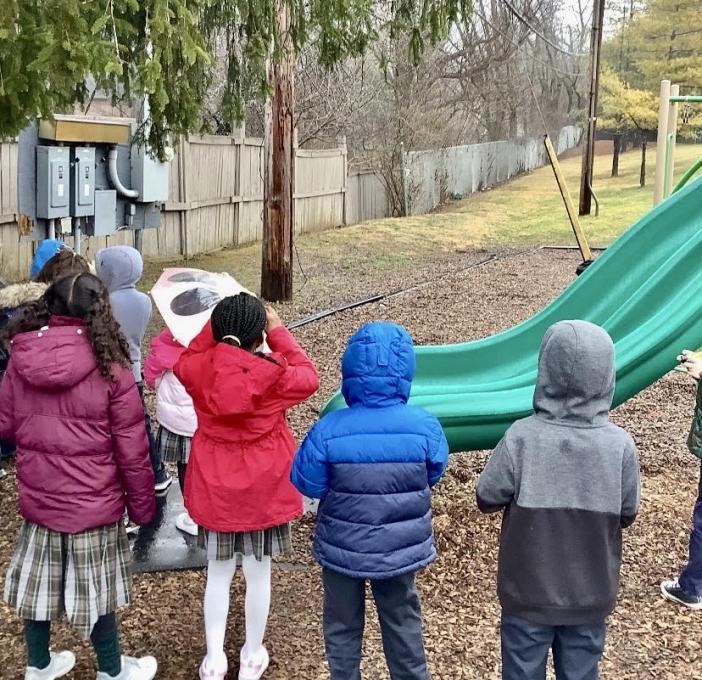
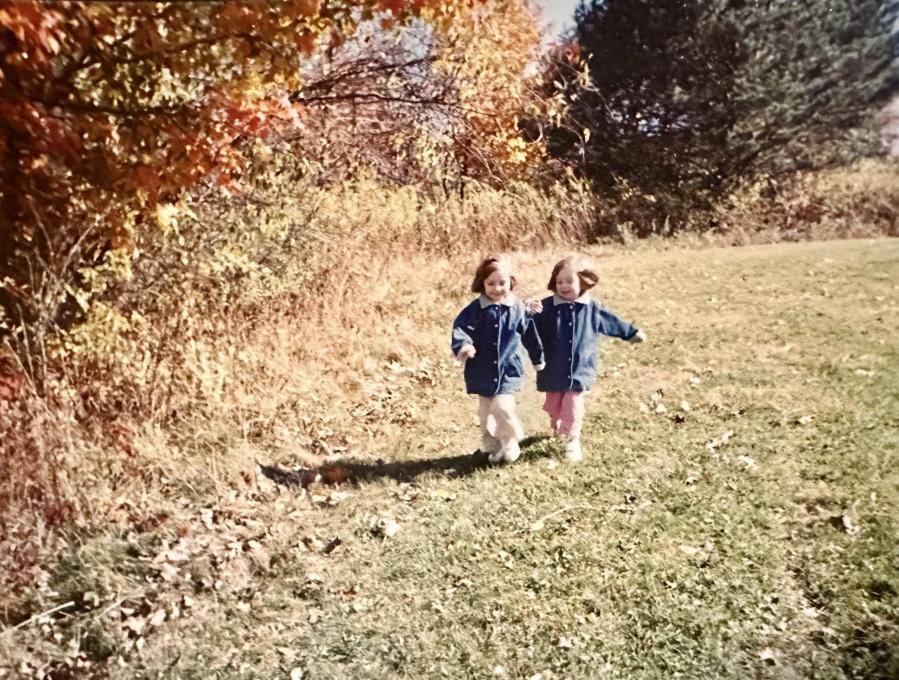 My very first memories and connection with nature started when I was a child, my family and I took daily family trips to our local Metro Park in Columbus, Blendon Woods. Even when I visit the park today I am immediately transported back in time to walking the trails, visiting the nature center, or playing on the playground with my sister as a child. The smell and the crunch of the leaves floods me with nostalgia. It feels like a warm embrace being at that park. Even visiting the zoo every week as young child connected me to nature. I wondered and learned about the various animals and the consistent trips made me feel connected to the animals getting to see them often. These things encompass my favorite memories of outdoor childhood play. As a first grade teacher, I wish for my students to develop the same connection and embrace I feel from Blendon Woods and the zoo. No matter how I am feeling, visiting these places always lifts me up and reminds me that nature is always present for us. This started because of my visits there as a young child. I worry as a teacher that because of technology, my students may lose that connection early on with nature. I pray and hope I can connect them to nature so they grow to love it as much as me.
Me & Nature Below...:)
My very first memories and connection with nature started when I was a child, my family and I took daily family trips to our local Metro Park in Columbus, Blendon Woods. Even when I visit the park today I am immediately transported back in time to walking the trails, visiting the nature center, or playing on the playground with my sister as a child. The smell and the crunch of the leaves floods me with nostalgia. It feels like a warm embrace being at that park. Even visiting the zoo every week as young child connected me to nature. I wondered and learned about the various animals and the consistent trips made me feel connected to the animals getting to see them often. These things encompass my favorite memories of outdoor childhood play. As a first grade teacher, I wish for my students to develop the same connection and embrace I feel from Blendon Woods and the zoo. No matter how I am feeling, visiting these places always lifts me up and reminds me that nature is always present for us. This started because of my visits there as a young child. I worry as a teacher that because of technology, my students may lose that connection early on with nature. I pray and hope I can connect them to nature so they grow to love it as much as me.
Me & Nature Below...:)

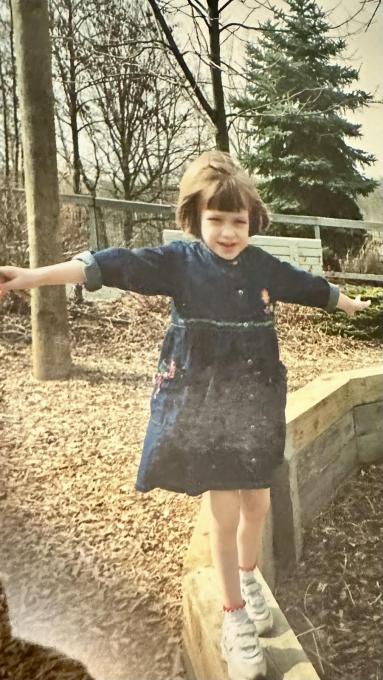
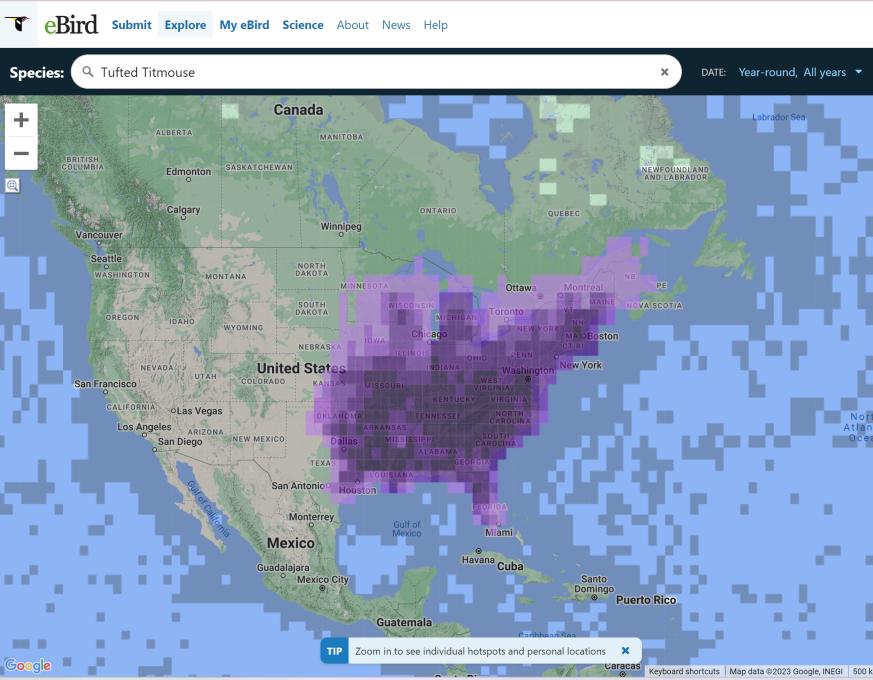
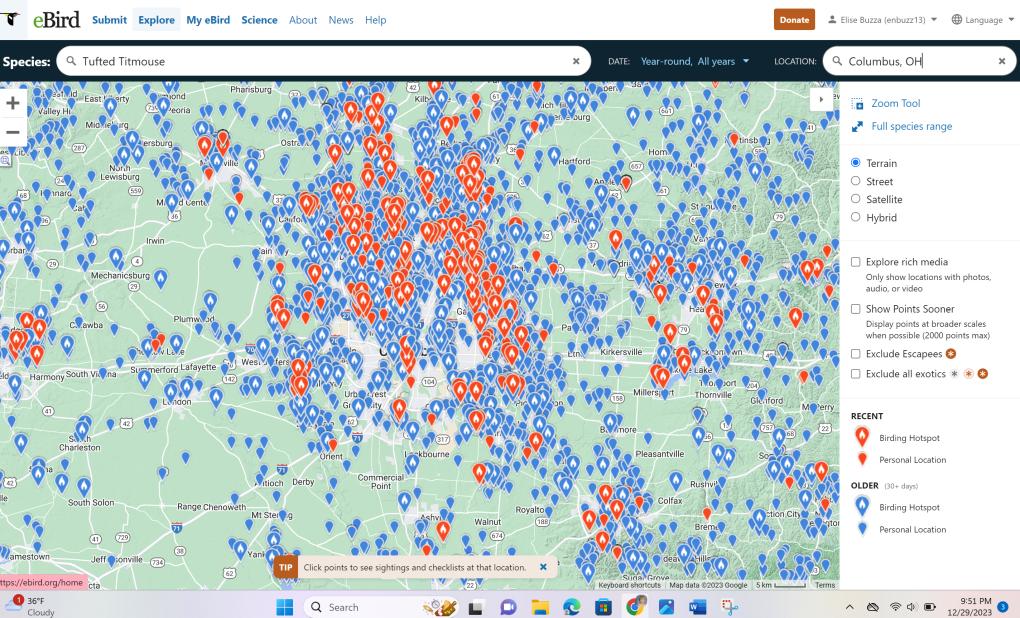
 The most impactful thing for me when creating the sound map, was how much "man-made noise" I heard. For example, cars, bikes, planes, etc. I had hoped to hear more of not "man-made noise". It was cool to hear bird sounds as I hear them frequently where I live. When doing a sound map, I love closing my eyes to be fully immersed in the sound. I will encourage my students to do the same.
The most impactful thing for me when creating the sound map, was how much "man-made noise" I heard. For example, cars, bikes, planes, etc. I had hoped to hear more of not "man-made noise". It was cool to hear bird sounds as I hear them frequently where I live. When doing a sound map, I love closing my eyes to be fully immersed in the sound. I will encourage my students to do the same. 